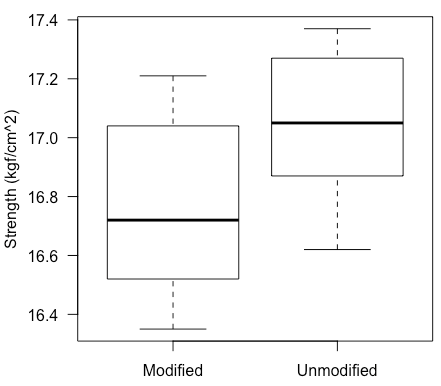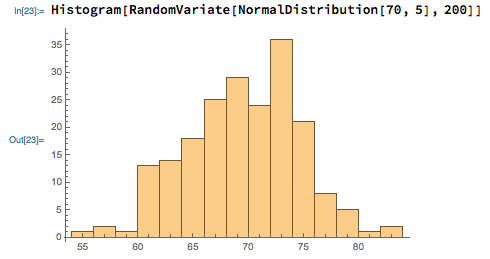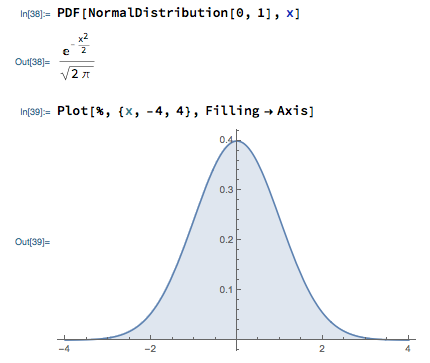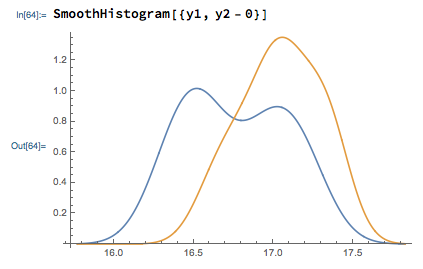Difference between revisions of "DOX Tools"
(→Recommendations) |
|||
| (34 intermediate revisions by the same user not shown) | |||
| Line 3: | Line 3: | ||
| − | The '''design of experiments''' ('''DOE''', '''DOX''', or '''experimental design''') is the design of any task that aims to describe or explain the variation of information under conditions that are hypothesized to reflect the variation<ref>Wikipedia. 2019. WikipediA: the Free Encyclopedia. Retrieved from | + | The '''design of experiments''' ('''DOE''', '''DOX''', or '''experimental design''') is the design of any task that aims to describe or explain the variation of information under conditions that are hypothesized to reflect the variation<ref>Wikipedia. 2019. WikipediA: the Free Encyclopedia. Retrieved from [[wikipedia:Design of experiments]].</ref>. Montgomery specifies <ref name="montgomery">Douglas C. Montgomery. 2013. ''Design and Analysis of Experiments'' (8th. ed.). Wiley, New York, NY.</ref> that '''experimental design''' is a tool for engineers and scientists to use for product design and development as well as process development and improvement. |
| − | Statistical software are specialized computer programs for analysis in statistics. In general, | + | Statistical software are specialized computer programs for analysis in statistics. In general, statistical software is needed to calculate necessary numerical values when you analyze the subject in DOX. There are various statistical software tools<ref>Wikipedia. 2019. WikipediA: the Free Encyclopedia. Retrieved from [[wikipedia:List of statistical software]].</ref> you can use in your study. Some authors prefer to use open-source, public domain, or freeware tools in their DOX books while others use proprietary software or add-ons. |
===Recommendations=== | ===Recommendations=== | ||
| − | + | You can see couple of products in below table which I prefer to use in my studies. | |
| − | + | <table class="table"> | |
| − | + | <tr> | |
| − | + | <th>Products - Open Source</th> | |
| − | + | <th>Help</th> | |
| + | </tr> | ||
| + | <tr> | ||
| + | <td> | ||
| + | [[wikipedia:GNU Octave|GNU Octave]]<br> | ||
| + | [[wikipedia:Gretl|gretl]]<br> | ||
| + | [[wikipedia:R (programming language)|R]]<br> | ||
| + | [[wikipedia:SciPy|SciPy]] | ||
| + | </td> | ||
| + | <td>[https://wiki.octave.org/GNU_Octave_Wiki GNU Octave Wiki]<br>[http://gretl.sourceforge.net/gretl-help/gretl-guide.pdf Gretl User's Guide]<br>[https://cran.r-project.org/web/views/ExperimentalDesign.html R packages for DOX]<br>[https://pythonhosted.org/pyDOE/ DOX packages for Python]</td> | ||
| + | </tr> | ||
| + | <tr> | ||
| + | <th>Products - Proprietary</th> | ||
| + | <th>Help</th> | ||
| + | </tr> | ||
| + | <tr> | ||
| + | <td> | ||
| + | [[wikipedia:EViews|EViews]]<br> | ||
| + | [[wikipedia:Maple (software)|Maple]]<br> | ||
| + | [[wikipedia:Minitab|Minitab]]<br> | ||
| + | [[wikipedia:Mathematica|Mathematica]]<br> | ||
| + | [[wikipedia:MATLAB|MATLAB]]<br> | ||
| + | [[wikipedia:SPSS|SPSS]] | ||
| + | </td> | ||
| + | <td>[http://www.eviews.com/help/helpintro.html EViews Help]<br>[https://www.maplesoft.com/support/helpJP/Maple/view.aspx?path=NAG/g04 Maple Help]<br>[https://support.minitab.com/en-us/minitab/18/getting-started/designing-an-experiment/ Minitab Support]<br>[https://reference.wolfram.com/language/guide/Statistics.html Statistical Data Analysis]<br>[https://www.mathworks.com/help/stats/design-of-experiments-1.html Mathworks Documentation]<br>[https://www.ibm.com/products/spss-statistics/support SPSS Help]</td> | ||
| + | </tr> | ||
| + | </table> | ||
| − | + | <hr class="stylish2"> | |
| − | + | ===An Example=== | |
| − | |||
| − | |||
| − | |||
| − | |||
| − | |||
| − | |||
| − | |||
| − | ===An | ||
<div class="columns"> | <div class="columns"> | ||
| Line 32: | Line 50: | ||
<small>''Example from Montgomery<ref name="montgomery" />, p.25.''</small> | <small>''Example from Montgomery<ref name="montgomery" />, p.25.''</small> | ||
| − | An engineer is studying the formulation of a Portland cement mortar. He has added a polymer latex emulsion during mixing to determine if this impacts the curing time and tension bond strength of the mortar. The experimenter prepared 10 samples of the original formulation and 10 samples of the modified formulation | + | An engineer is studying the formulation of a Portland cement mortar. He has added a polymer latex emulsion during mixing to determine if this impacts the curing time and tension bond strength of the mortar. The experimenter prepared 10 samples of the original formulation and 10 samples of the modified formulation. |
</div> | </div> | ||
<div class="column"> | <div class="column"> | ||
| Line 40: | Line 58: | ||
</div> | </div> | ||
| − | + | ===Solution in R Language=== | |
| − | + | <small>See ''Appendix: R Code''.</small> | |
| − | |||
| − | |||
| − | |||
| − | |||
| − | |||
| − | |||
| − | |||
| − | |||
| − | |||
| − | < | ||
| − | |||
| − | |||
| − | |||
| − | |||
| − | |||
| − | |||
| − | </ | ||
| − | |||
| − | |||
| − | |||
<div class="columns"> | <div class="columns"> | ||
| Line 72: | Line 70: | ||
data: y1 and y2 | data: y1 and y2 | ||
t = -2.1869, df = 18, p-value = 0.0422 | t = -2.1869, df = 18, p-value = 0.0422 | ||
| − | alternative hypothesis: true difference in means is not equal to 0 | + | alternative hypothesis: true difference |
| + | in means is not equal to 0 | ||
95 percent confidence interval: | 95 percent confidence interval: | ||
-0.54507339 -0.01092661 | -0.54507339 -0.01092661 | ||
| Line 88: | Line 87: | ||
data: y1 and y2 | data: y1 and y2 | ||
t = -2.1869, df = 17.025, p-value = 0.043 | t = -2.1869, df = 17.025, p-value = 0.043 | ||
| − | alternative hypothesis: true difference in means is not equal to 0 | + | alternative hypothesis: true difference |
| + | in means is not equal to 0 | ||
95 percent confidence interval: | 95 percent confidence interval: | ||
-0.546174139 -0.009825861 | -0.546174139 -0.009825861 | ||
| Line 97: | Line 97: | ||
</div> | </div> | ||
</div> | </div> | ||
| + | |||
| + | <div class="columns" style="align-items: flex-end;"> | ||
| + | <div class="column"> | ||
| + | <center>[[File:mont-2.png]]</center> | ||
| + | <center>{{Figure|'''Figure:''' Dot diagram, created with R.}}</center> | ||
| + | </div> | ||
| + | <div class="column"> | ||
| + | <center>[[File:mont-3.png]]</center> | ||
| + | <center>{{Figure|'''Figure:''' Histogram, created with R.}}</center> | ||
| + | </div> | ||
| + | </div> | ||
| + | <div class="columns" style="align-items: flex-end;"> | ||
| + | <div class="column"> | ||
| + | <center>[[File:mont-4.png]]</center> | ||
| + | <center>{{Figure|'''Figure:''' Box plots, created with R.}}</center> | ||
| + | </div> | ||
| + | <div class="column"> | ||
| + | <center>[[File:mont-5.png]]</center> | ||
| + | <center>{{Figure|'''Figure:''' The normal density function, created with R.}}</center> | ||
| + | </div> | ||
| + | </div> | ||
| + | |||
| + | ===Solution in Wolfram Mathematica=== | ||
| + | <div class="columns"> | ||
| + | <div class="column"> | ||
| + | <small><pre> | ||
| + | In[4]:= y1={16.85,16.40,...,16.59,16.57} | ||
| + | Out[4]= {16.85,16.4,...,16.59,16.57} | ||
| + | In[5]:= y2={16.62,16.75,...,17.08,17.27} | ||
| + | Out[5]= {16.62,16.75,...,17.08,17.27} | ||
| + | </pre></small> | ||
| + | </div> | ||
| + | <div class="column"> | ||
| + | <small><pre> | ||
| + | In[46]:= TTest[{y1,y2},Automatic, "TestData"] | ||
| + | Out[46]= {-2.18688,0.0421967} | ||
| + | In[48]:= Mean[y1]-Mean[y2] | ||
| + | Out[48]= -0.278 | ||
| + | In[65]:= TTest[{y1,y2},0] | ||
| + | Out[65]= 0.0421967 | ||
| + | In[69]:= MeanDifferenceCI[y1,y2] | ||
| + | Out[69]= {-0.546174,-0.00982586} | ||
| + | In[68]:= MeanDifferenceCI[y1,y2,EqualVariances->True] | ||
| + | Out[68]= {-0.545073,-0.0109266} | ||
| + | </pre></small> | ||
| + | </div> | ||
| + | </div> | ||
| + | |||
| + | <div class="columns" style="align-items: flex-end;"> | ||
| + | <div class="column"> | ||
| + | <center>[[File:mont-3a.png]]</center> | ||
| + | <center>{{Figure|'''Figure:''' Histogram, created with Mathematica.}}</center> | ||
| + | </div> | ||
| + | <div class="column"> | ||
| + | <center>[[File:mont-4a.png]]</center> | ||
| + | <center>{{Figure|'''Figure:''' Box plots, created with Mathematica.}}</center> | ||
| + | </div> | ||
| + | </div> | ||
| + | <div class="columns" style="align-items: flex-end;"> | ||
| + | <div class="column"> | ||
| + | <center>[[File:mont-5a.png]]</center> | ||
| + | <center>{{Figure|'''Figure:''' The normal density function, created with Mathematica.}}</center> | ||
| + | </div> | ||
| + | <div class="column"> | ||
| + | <center>[[File:mont-6a.png]]</center> | ||
| + | <center>{{Figure|'''Figure:''' Plotting two datasets, created with Mathematica.}}</center> | ||
| + | </div> | ||
| + | </div> | ||
| + | |||
| + | ===Appendix: R Code=== | ||
<gisthub gist="d11d9f3c087d1279eb0d7c29e8c12dd1"/> | <gisthub gist="d11d9f3c087d1279eb0d7c29e8c12dd1"/> | ||
| − | |||
{{References}} | {{References}} | ||
[[Category:Blog]] | [[Category:Blog]] | ||
Latest revision as of 12:24, 19 October 2019
October 19, 2019
The design of experiments (DOE, DOX, or experimental design) is the design of any task that aims to describe or explain the variation of information under conditions that are hypothesized to reflect the variation[1]. Montgomery specifies [2] that experimental design is a tool for engineers and scientists to use for product design and development as well as process development and improvement.
Statistical software are specialized computer programs for analysis in statistics. In general, statistical software is needed to calculate necessary numerical values when you analyze the subject in DOX. There are various statistical software tools[3] you can use in your study. Some authors prefer to use open-source, public domain, or freeware tools in their DOX books while others use proprietary software or add-ons.
Recommendations
You can see couple of products in below table which I prefer to use in my studies.
| Products - Open Source | Help |
|---|---|
| GNU Octave Wiki Gretl User's Guide R packages for DOX DOX packages for Python |
|
| Products - Proprietary | Help |
| EViews Help Maple Help Minitab Support Statistical Data Analysis Mathworks Documentation SPSS Help |
An Example
Example from Montgomery[2], p.25.
An engineer is studying the formulation of a Portland cement mortar. He has added a polymer latex emulsion during mixing to determine if this impacts the curing time and tension bond strength of the mortar. The experimenter prepared 10 samples of the original formulation and 10 samples of the modified formulation.
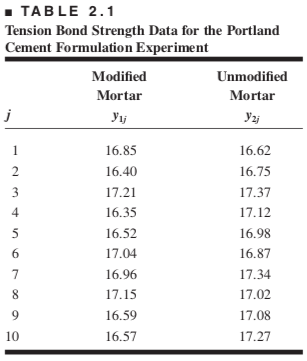
Figure: Screenshot of the Table 2.1. in Montgomery's book[2], p.26.
Solution in R Language
See Appendix: R Code.
> t.test(y1,y2,var.equal=TRUE)
Two Sample t-test
data: y1 and y2
t = -2.1869, df = 18, p-value = 0.0422
alternative hypothesis: true difference
in means is not equal to 0
95 percent confidence interval:
-0.54507339 -0.01092661
sample estimates:
mean of x mean of y
16.764 17.042
> t.test(y1,y2)
Welch Two Sample t-test
data: y1 and y2
t = -2.1869, df = 17.025, p-value = 0.043
alternative hypothesis: true difference
in means is not equal to 0
95 percent confidence interval:
-0.546174139 -0.009825861
sample estimates:
mean of x mean of y
16.764 17.042
Solution in Wolfram Mathematica
In[4]:= y1={16.85,16.40,...,16.59,16.57}
Out[4]= {16.85,16.4,...,16.59,16.57}
In[5]:= y2={16.62,16.75,...,17.08,17.27}
Out[5]= {16.62,16.75,...,17.08,17.27}
In[46]:= TTest[{y1,y2},Automatic, "TestData"]
Out[46]= {-2.18688,0.0421967}
In[48]:= Mean[y1]-Mean[y2]
Out[48]= -0.278
In[65]:= TTest[{y1,y2},0]
Out[65]= 0.0421967
In[69]:= MeanDifferenceCI[y1,y2]
Out[69]= {-0.546174,-0.00982586}
In[68]:= MeanDifferenceCI[y1,y2,EqualVariances->True]
Out[68]= {-0.545073,-0.0109266}
Appendix: R Code
References
- ↑ Wikipedia. 2019. WikipediA: the Free Encyclopedia. Retrieved from wikipedia:Design of experiments.
- ↑ 2.0 2.1 2.2 Douglas C. Montgomery. 2013. Design and Analysis of Experiments (8th. ed.). Wiley, New York, NY.
- ↑ Wikipedia. 2019. WikipediA: the Free Encyclopedia. Retrieved from wikipedia:List of statistical software.


